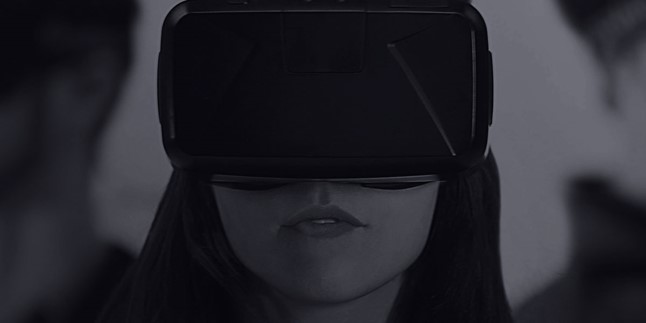
BIMA’s Immersive Technology Think Tank sets out its best practice guidelines for creating better VR experiences.
Download best practice guide here.
AR/VR and other “immersive” technologies have captured the industry’s attention to such an extent that they are starting to drive creative thinking and – crucially – see real interest from brands.
The problem is that there is huge disparity in knowledge about the technologies involved, best practice and even what constitutes the best examples of work within the immersive technology area.
That’s where BIMA’s Immersive Tech Think Tank comes in. Together, our members have set out to help wider industry understand the true possibilities of VR, helping brands step beyond theme park novelty to explore now best practice can help their business.
Aside from eating up column inches and dominating trends presentations? You could argue that, until fairly recently, the answer was ‘not enough’. But as technology improves and applications widen from its entertainment base, VR – done well – has the power to capture the imagination like little else. Here’s why:
• Immersive: VR breaks the fourth wall and commands 100% of the user’s attention
• Impact: VR is proven to drive behavioural change and generate intense experiences
• Memorable: VR experiences remain in a user’s memory for a long time and drive brand recall
So if you’re setting out to make VR a part of your brand, where do you start? What sort of VR experience should you create? And how do you create a VR experience that ventures further than the initial “Wow!” to deliver something that makes a real difference? What follows is the BIMA Immersive Tech Think Tank’s best practice guide, in eight simple steps:
VR for VR’s sake has an inevitably short shelf-life. Inappropriate use of VR can be actively damaging. To deliver real value, there needs to be real purpose and clarity in the use of VR as a tool. Consider:
• What does VR add to this project (eg brand value, storytelling or aligning with campaign goals)?
• Is it appropriate for the brand and the end user?
• Does it fit into my wider strategy?
2. Does VR help tell a good story?
Storytelling in the marketing world is hardly new. Storytelling with VR is simply a new tool to weave more immersive tales. Yet the basic rules remain:
• Do we have great characters?
• Are we making an emotional connection?
• Are we leaving people with a concrete feeling or defining the action we want them to take?
To that traditional set of questions, VR adds a fourth: are we leading the user or letting them explore?
At a product launch or similar, presenting a passive VR experience that blows the viewer’s mind can still pay dividends. Yet from engineering to fashion to medicine and healthcare, the potential for VR to be a powerful tool – something you work with rather than something you watch – is huge.
VR that doesn’t use the full VR toolkit is little more than a high-tech equivalent of a 1970s View-Master. And as for VR that aims to dazzle without taking account of the limits of its audience… well, no other marketing tool has the power to make your customers feel quite so woozy.
So there are clear technical tolerances and practicalities involved in creating VR experiences that maximise the impact whilst minimising discomfort:
• Sharpness: Aim for the highest available image resolution
• Interactivity: The ability to roam and interact in VR is what differentiates the experience from video content.
• Stereoscopic: True stereoscopic VR makes the experience dramatically more immersive and less likely to cause discomfort
VR isn’t simply a visual tool. Reality, virtual or otherwise, needs to involve all the senses. And when every user is a social animal, how do you use what has to date been a relatively solitary experience in a social way? Consider:
• How do we use sound to make VR more immersive?
• Can movement and environmental elements make it 4D?
• Is there an opportunity to make your VR application more social?
Like any new technology, success relies not on early adopters, but on mass, casual use. That means brands need to make their VR experiences blissfully simple, platform agnostic, respectful, natural and ‘safe’. Consider:
• Does it respect the user OS and allow people in quickly?
• Does it put the user – especially their hands – into context?
• Does it respect the space around the user e.g. one metre rule?
Defining what success looks like when you have no benchmark isn’t easy. So what KPIs can you create for the project? How, for example, do first time VR users react to the experience? And how well does the project need to perform to enable you to create more VR experiences?
VR, certainly in its emergent state (from a brands perspective), isn’t easy and it isn’t cheap. So if you’re going to do it at all there needs to be an understanding of the wider position the project occupies:
• Is it worth the hard work?
• Are we creating positive brand experiences?
• Will it inspire other VR content?
We are at a tipping point for VR. The brands that harness it best, that use it to deliver a new experience in a new way (rather than simply rehashing an existing experience with a headset) can set the benchmark for the market.
Appropriately enough, it starts with the ability to look at the landscape through a different lens.